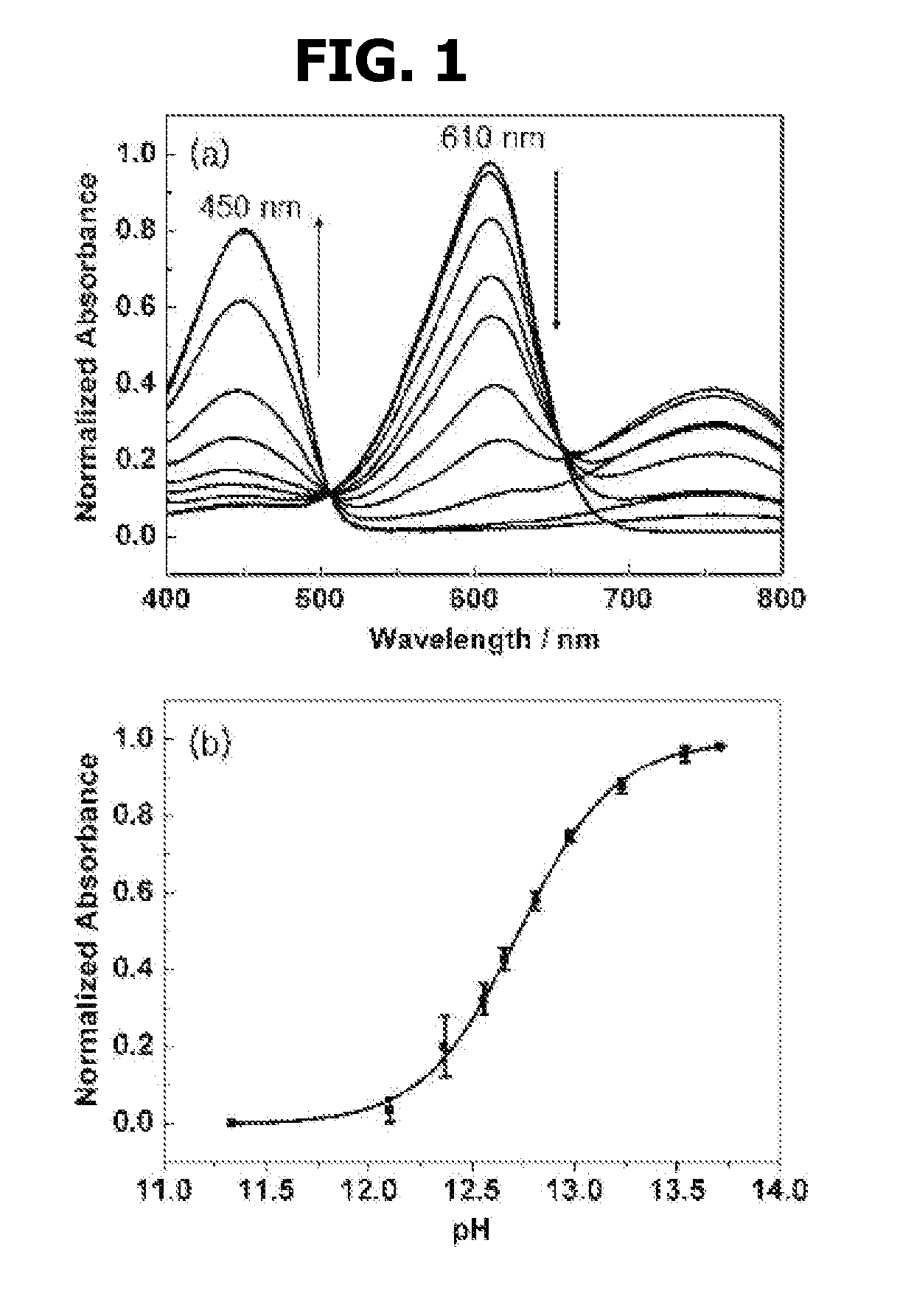GOLD NANOPARTICLE-BASED pH SENSOR IN HIGHLY ALKALINE REGION BY SURFACE-ENHANCED RAMAN SCATTERING STUDY
a raman scattering and nanoparticle technology, applied in the field of gold nanoparticle-based ph sensor, can solve the problem of unreliable reasons for splitting, and achieve the effect of improving the accuracy of ph sensor and ph sensor
- Summary
- Abstract
- Description
- Claims
- Application Information
AI Technical Summary
Benefits of technology
Problems solved by technology
Method used
Image
Examples
examples
[0034]Citrate-reduced gold nanoparticles are synthesized according to the method disclosed in the reference document(28).
[0035]First, 133.5 mg of KAuCl4 was dissolved in 250 mL of water, followed by boiling. A 1% sodium citrate solution (25 mL) was added to the KAuCl4 solution with vigorous stirring. The solution was continuously boiled for about 20 min to obtain a colloidal solution of gold nanoparticles. With the exclusion of evaporated water, the concentration of gold (Au) particles was about 1.28×10−3 M and the concentration of gold nanoparticles was about 9.1×10−9 M(29). Unless otherwise specified, all chemicals are reagent grade and aqueous solutions are prepared from tertiary distilled water having a resistance of 18.0 MΩcm or more. To compare gold nanocrystal aggregates induced by SAMs, SAMs were formed on the surface of the gold nanoparticles by using 4-ethynylpyridine (4-EP) having the structure shown in the following formula (1), which is a pyridine compound having acetyl...
PUM
 Login to View More
Login to View More Abstract
Description
Claims
Application Information
 Login to View More
Login to View More - R&D
- Intellectual Property
- Life Sciences
- Materials
- Tech Scout
- Unparalleled Data Quality
- Higher Quality Content
- 60% Fewer Hallucinations
Browse by: Latest US Patents, China's latest patents, Technical Efficacy Thesaurus, Application Domain, Technology Topic, Popular Technical Reports.
© 2025 PatSnap. All rights reserved.Legal|Privacy policy|Modern Slavery Act Transparency Statement|Sitemap|About US| Contact US: help@patsnap.com



